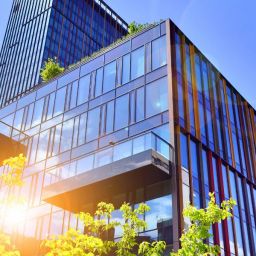
Preventative Maintenance Checklist
Preventative maintenance is one of the essential parts of running an efficient and cost-effective business. Most things become more expensive the longer you wait to repair them, so having a preventative maintenance checklist helps ensure that you catch any problems as soon as possible.
Checklist Guidelines
- Revise this facility maintenance checklist whenever you add or remove something at your facility
- Follow manufacturer guidelines for maintaining or replacing any dangerous items, even if those differ from the guidelines presented below
- Review this facility maintenance checklist with the appropriate personnel annually, as well as each time you update it
General Safety
- Check and refill or replace all first aid kits after using them
- Check to be sure all safety signs are visible and easy to read
- Clean all respirator systems
- Test your fire alarm monthly
- Test your fire escape equipment, if present
- Test all fire extinguishers twice a year, replacing as needed
- Make sure you have the right type of fire extinguishers for your building, including extinguishers for electrical or kitchen
fires as appropriate - Test and drain your sprinkler system regularly
- Remove any obstructions from stairs
- Dispose of all chemicals and hazardous waste as directed by manufacturers or applicable regulations
- Clearly label all hazardous products and supplies
Maintenance Supplies
- Ensure your facility has personal protective equipment for everyone who needs it; this includes hard hats, ear protection, eye protection, visible clothing, and anything else that may be necessary
- Keep all cleaning supplies stocked
- Have a set of tools for making repairs, including a power washer, a vacuum suitable for both wet and dry floors, and a drill
- Keep air filtration equipment available
Grounds Care<
- Remove as many weeds as possible
- Limit the presence of insects on your grounds; some, such as ladybugs, can help naturally repel other problems
- Ensure the soil has at least one inch of mulch on top for your plants to grow in
- Keep the grounds mowed to the appropriate height for the type of grass you’re using
- Apply fertilizer as directed by manufacturers
- Prune trees and shrubs seasonally
- Remove any fruit, branches, or other plant parts that could fall on people
- Test your sprinkler system to ensure all sections function properly
- Water and dethatch the lawn regularly
Roofing
- Check the roof for damage every six months, as well as after any particularly bad weather
- Clean the drains of any debris and make sure they’re firmly anchored to the building
- Check metal parts for any signs of corrosion or general wear
- Flush water through drains and downspouts to check for clogs
- Clean up any areas of standing water and add a slope to the roof to prevent future accumulation of liquid
- Eliminate any plants growing on your building
Exterior Maintenance
- Check any paint on the outside of your building and repaint if it’s peeling or chipping. Paint on the exposed side(s) of the building usually wears out first
- Remove any dirt stuck to the side of the building, using a power washing tool as needed
- Check the condition of all doors, locks, and windows, repairing or replacing as needed
- Clean all windows at least four times each year, preferably when seasons change
- Remove any plants growing along the foundation
- Fill all cracks in pavement with a sealant
- Remove any debris on the building grounds, including garbage or items left out
- Ensure all walking areas are clean and safe to walk on, replacing their coating every ten years or so
- Ensure the area around the dumpsters is clean
- Check all fencing; if you need to replace it, make sure to get something weather-resistant
- Insulate pipes and disconnect hoses before winter
Interior Maintenance
- Check all walls for signs of moisture, mold, or peeling paint
- Clean all floors regularly
- Replace carpets roughly every five years, or more often if it gets stained quickly
- Replace other floorings every 15 to 30 years, as needed
- Check for any signs of leaks, broken pipes, or faulty seals
- Check the locks on all windows, and add locks to any windows that do not have them
- Lubricate all hinges and locking mechanisms monthly, or more often if they see a lot of use
- Check all water-using equipment, including toilets and faucets
- Make sure all waste containers have lids
- Check doors to ensure they’re weather-tight
- Remove any obstructions from the path of exits
- Remove any trash that’s building up
- Look for signs of insect infestations and call a professional exterminator if you see anything
HVAC
- Clean the air intake of your HVAC system as necessary
- Replace your air filters as scheduled, but check them at least monthly to determine whether or not you should replace them sooner
- Isolate anything causing excessive vibrations or noise while the blower is operating; these are usually a sign of something that could cause damage over time
- Ensure all drain pans are draining as they should be
- Keep the motors and ducts clean, and call in a professional cleaning company at least once a year
- Look for any signs of leaks in flexible duct connections
- Lubricate HVAC bearings annually
- Check the connections and condition of all electrical hardware
- Test all safety controls monthly
- Minimize mineral buildup inside of water heaters
- Drain the boiler occasionally to remove any sediment
- Calibrate your thermostat
Lighting
- Check all light fixtures regularly, replacing any dead bulbs
- Replace bulbs in sensitive areas, like places where customers or clients go, before they completely burn out
- Inspect all exterior cables, hardware, and screws to ensure they’re in good shape
- Clean all lighting surfaces regularly
- Carefully remove any bulbs that contain dangerous substances like lead or mercury, and follow local guidelines for recycling them
- Check the aim of any adjustable lighting
Electrical Systems
- Have a licensed electrician inspect your entire facility every three years, or more often if required
- Test all automatic and manual switches within your building
- Check electrical boxes and connections for signs of overheating or deterioration
- Do not simply replace damaged components; be sure you can identify why they are damaged, and ask an expert if you need to
- Test all outlets in the building
- Test all smoke alarms, carbon monoxide detectors, other test instruments, and flashlights; replace any batteries as needed
- Make sure all outlet covers are tight and uncracked
- Test any exhaust fans
- Lubricate electrical equipment as directed by the manufacturer
- Check all fuse systems to ensure all of them are working; do not use different kinds of fuses unless directed to
- Remove any obstructions that prevent access to electrical panels
- Keep all electrical meters clean and properly illuminated
Pipes and Plumbing
- Check pipes annually
- Lubricate bearings on any water boosters or circulation systems annually
- Fire-test boilers and water heaters occasionally
- Check all sewage ejection systems and lubricate any exposed parts annually
- Test all hot and cold water faucets and outlets every three months
- Ensure all drains connect to the sanitary sewer properly
- Add backflow devices where appropriate
- Test the low water shut-off systems on sinks and other outlets
- Clean sink and building traps to ensure adequate drainage
















